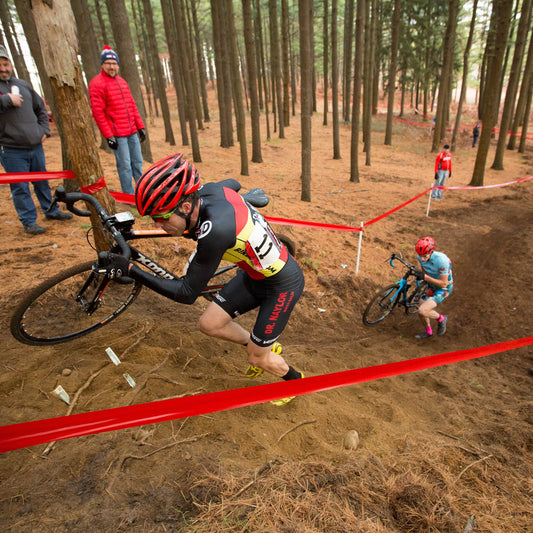This article was written by Steve Magness, and posted on The Growth Education website, HERE.
What do you do when it feels like it’s all going wrong?
When your mind spirals towards negativity, when your thoughts get locked into a pattern of rumination and catastrophizing, when you get stuck in inaction, ready to hit the eject button on the speech you are about to give, the race you are running, or the project that needs to be finished by tomorrow.
When stress, anxiety, or pressure mount, our bodies and brains often default to hopelessness. In last week’s newsletter, Brad talked about the difference between dealing with stress in the short term versus addressing its root causes over the long haul. Today, I want to provide a framework and some tools to deal with stress in the moment, to get out of escape mode and get your rational brain back online.
Think of it as what to do when your brain is screaming at you to STOP whatever it is you are doing, or when all you want to do is scream because your kids are melting down around you.
The framework I’ll detail below deals with zooming in and zooming out.
Stress tends to narrow us. Our attention, thoughts, and actions all center on the perceived threat. We get locked in on the proverbial python in our path, or we can’t stop thinking about how bad our quads hurt right now. It’s as if we’ve shined a spotlight, or zoomed in on a narrow band of the world, neglecting whatever is blacked out in the periphery.
This spotlight can be beneficial. It’s our brain’s way of turning up the volume on the most important information in this moment (i.e., whatever is threatening us). It’s as if our brain says, Forget everything else going on in the periphery, or in the future; all that matters is this right here! Deal with it!
Even in sports this can be beneficial. When researchers studied how athletes performed in the clutch, they found the athletes tended to narrow in. In Swann and colleagues’ excellent work, they found clutch states had: complete and deliberate focus; heightened awareness of self; heightened arousal; and an experience of intense deliberate effort. This is different from being in the zone or experiencing flow, which is often experienced as effortless. During clutch states, we briefly narrow on what matters—making the play, scoring the goal—and use deliberate effort to get the job done.
But if we stay narrow for too long, or if our stress is too high and we can’t manage and direct it productively, things begin to spiral. The athlete who has a too-heightened awareness of their self doesn’t just notice their thoughts and feelings; but those feelings take over. The pain of the effort overwhelms. The negative thinking and feeling kicks in.
It’s why being clutch is really freaking hard.
On the other side is the floodlight, or what I call zooming out. A floodlight allows you to see broadly. It shifts your view to the periphery. It’s an attempt to take in more information instead of narrowing it on one specific area.
During a run in the mountains of Tennessee, I stumbled upon a bear on the path. Caught by complete surprise, initially, I narrowed in on the bear, but then something happened. I stopped in my tracks, froze, and started noticing the periphery. This is the freeze response. Our brain knows we are in danger, but doesn’t have a great solution yet. So we stop, zoom out, and take in more information so we can find a solution.
When we zoom out, according to research, we drag our perception, attention, thinking, openness to experience, and even mood with us. A group of Israeli researchers hypothesize that when we adopt a broad state of mind, we shift to relying more on sensory information to guide our actions, and our actions become more exploratory.
For most of us, when stress or anxiety overwhelms us, it’s zooming out which will dislodge our mind from being trapped in a cycle of catastrophizing, and perhaps open up to options to productively deal with the situation. Here are five tools to zoom out when your brain goes narrow:
Visual Zooming
If you ever see me take my glasses off during a presentation, you now know it’s because I’m nervous. When I remove my glasses, I can’t see any details, but only the blurry shape of objects and people. In other words, I’ve forced my visual system to go broad.
If you don’t have glasses, you aren’t out of luck. Softening your gauze and focusing on the periphery will do the same thing. Research shows that shifting our attention to the periphery can enhance creativity, as it unlocks our mind from the narrow.
Linguistic Zooming
When we switch our self-talk from first person to either second or third person, we are putting distance between what’s occurring and our response to it. We are zooming out. Psychologists call this creating psychological distance, a topic Brad wrote about extensively in The Practice of Groundedness. Research shows it dampens down the strength of the emotions that we feel.
During World War Two, the American military realized that new fighter pilots narrowed in so much during extreme situations that they sometimes got stuck in inaction, unaware of any warning signals going off or even their co-pilot trying to communicate with them. Co-pilots discovered that talking in a calm voice with clear commands snapped them out of it. Decades later, when researchers out of the University of Michigan strategically reminded pilots to broaden their attention throughout a stressful landing, their performance improved markedly.
Cognitive Zooming
The founding father of capitalism, Adam Smith, wrote that one of the keys to living a good life was being able to adopt the view of an “impartial spectator.” In modern lingo, we’d call this adopting the view of someone else. We can or ask what advice we’d give a friend in this moment, or perhaps what advice they’d give us? When we adopt another viewpoint, it zooms us out, decreasing the spiral.
Temporal Zooming
When we narrow, we discount the future. Who cares what finishing a marathon will feel like when it hurts so much at mile 18! Just end the pain. One of the ways to break this cycle is to zoom out by thinking about how your future self will judge your actions. How will you view your current struggle at mile 18 when you are at the finish line? How will this project look one year from now?
Physical Zooming
Changing our actions can shift our state of mind. In one study, researchers took participants and sat them in a chair, then told them to either lean forward so that they were on the edge of their seats, anticipating what was coming, or to lean back in a fully reclined comfortable position. After getting into the respective positions, subjects were given the task to categorize a group of pictures. Those who reclined in the chair were more likely to choose broad categories, coming up with creative ways to make, say, a vehicle and a camel fit in the same category. When on the edge of their seat, participants stuck to narrow categories. Not only does our mood follow our physical actions, but so does our thinking and perception.
— Steve
(p.s., for more information on zooming in and out, it’s a large part of Do Hard Things,and is covered thoroughly in chapter 10. The good news is that zooming is a skill. Research on athletes shows that experienced runners can zoom in and out much better than novices. One of the reasons for this is that they spend a lot of time developing their ability to cope with distress by shifting their attention, thoughts, and actions.)






